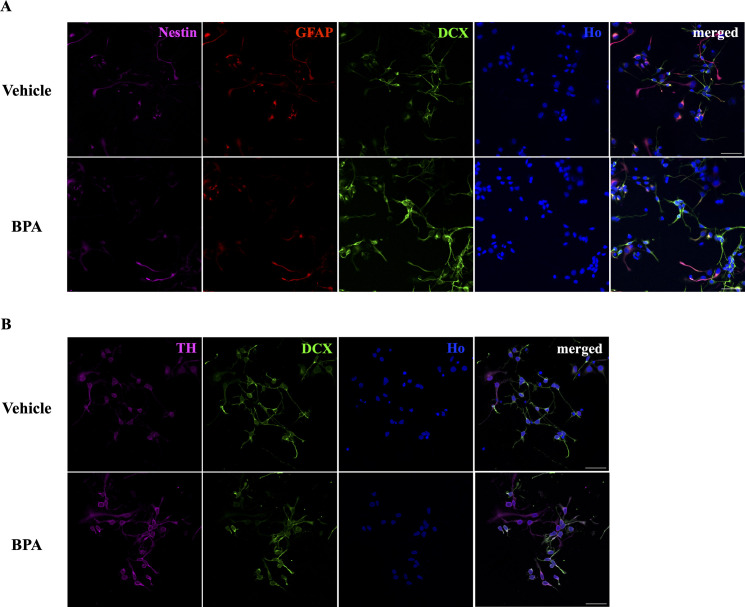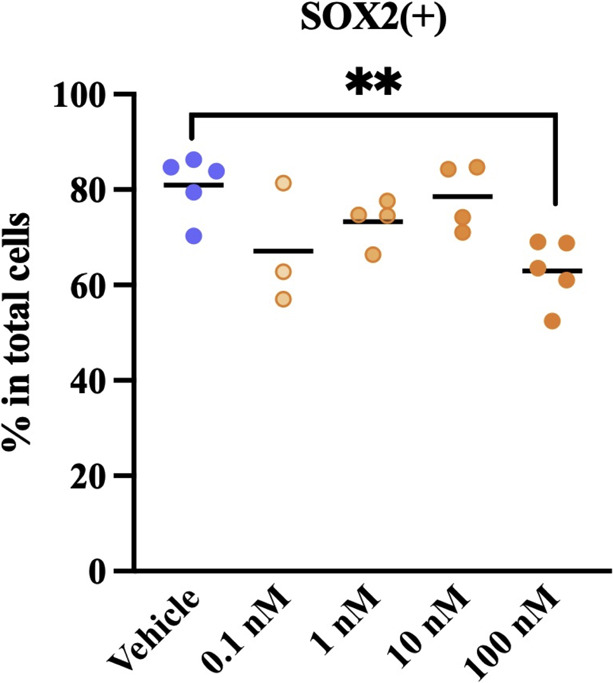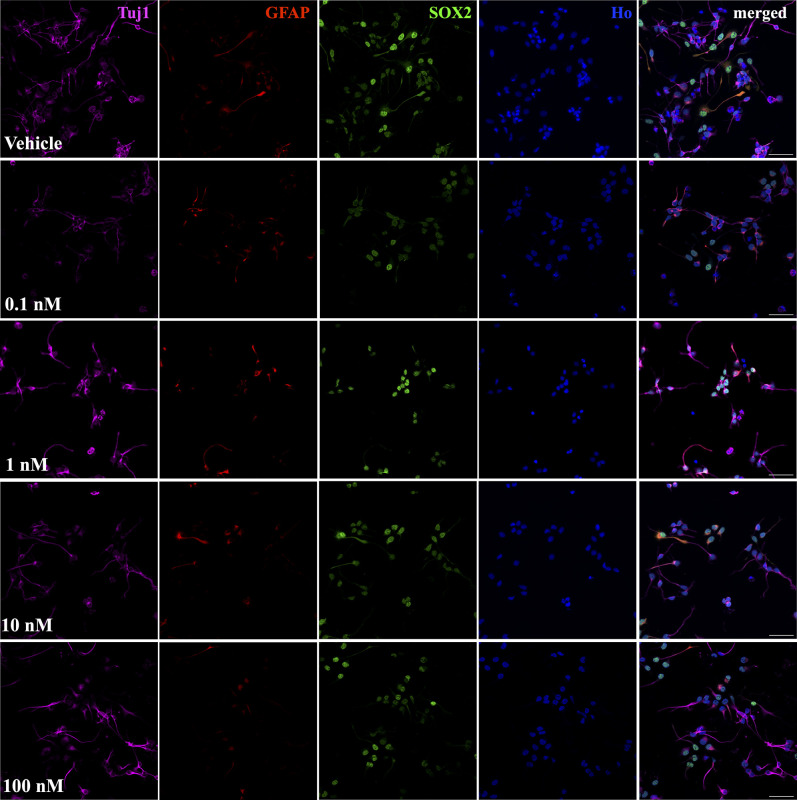Low Doses of Bisphenol A Disrupt Neuronal Differentiation of Human Neuronal Stem/Progenitor Cells.
IF 1.8
4区 生物学
Q4 CELL BIOLOGY
引用次数: 0
Abstract
Bisphenol A (BPA) is an endocrine disrupting chemical. Human epidemiological studies have suggested that adverse neurobehavioral outcomes are induced by fetal exposure to BPA. The remarkable differences in the corticogenesis between human and agyrencephalic mammals are an increase in the intermediate progenitor cells (IPCs) and a following increase in the subplate thickness. It is uncertain whether low doses of BPA (low-BPA) affect human early corticogenesis when basal progenitor cells (BPs) produce IPCs resulting in amplified neurogenesis. In this study, human-derived neuronal stem/progenitor cells were exposed to low-BPA or the vehicle only, and the resultant cell type-specific molecular changes and morphology were analyzed. We focused on stem cells immunoreactive for SOX2, BPs for NHLH1, and immature neurons for DCX. SOX2-positive cells significantly decreased at day in vitro (DIV) 4 and 7, whereas NHLH1-positive cells tended to be higher, while DCX-positive cells significantly increased at DIV7 when exposed to 100 nM of BPA compared with the vehicle. Morphologically DCX-positive cells showed a decrease in unipolar cells and an increase in multipolar cells when exposed to 100 nM of BPA compared with the vehicle. These results provide insights into the in vivo effect of low-BPA on neuronal differentiation in the human fetal corticogenesis.



低剂量双酚A破坏人神经干/祖细胞的神经分化
双酚A (BPA)是一种干扰内分泌的化学物质。人类流行病学研究表明胎儿暴露于BPA会导致不良的神经行为结果。人类和长脑哺乳动物在皮质发生方面的显著差异是中间祖细胞(IPCs)的增加和随后的亚板厚度的增加。当基底祖细胞(bp)产生IPCs导致神经发生扩增时,低剂量双酚a (low-BPA)是否会影响人类早期皮质发生尚不确定。在本研究中,人类来源的神经干细胞/祖细胞暴露于低bpa或仅暴露于载体,并分析了由此产生的细胞类型特异性分子变化和形态。我们专注于SOX2的干细胞免疫反应,NHLH1的bp和DCX的未成熟神经元。当BPA浓度为100 nM时,sox2阳性细胞在离体日(DIV) 4和7时显著降低,nhlh1阳性细胞趋于升高,dcx阳性细胞在离体日(DIV) 7时显著升高。与对照相比,暴露于100 nM BPA时,dcx阳性细胞单极细胞减少,多极细胞增加。这些结果为体内低双酚a对人类胎儿皮质发生中神经元分化的影响提供了新的见解。
本文章由计算机程序翻译,如有差异,请以英文原文为准。
求助全文
约1分钟内获得全文
求助全文
来源期刊

Acta Histochemica Et Cytochemica
生物-细胞生物学
CiteScore
3.50
自引率
8.30%
发文量
17
审稿时长
>12 weeks
期刊介绍:
Acta Histochemica et Cytochemica is the official online journal of the Japan Society of Histochemistry and Cytochemistry. It is intended primarily for rapid publication of concise, original articles in the fields of histochemistry and cytochemistry. Manuscripts oriented towards methodological subjects that contain significant technical advances in these fields are also welcome. Manuscripts in English are accepted from investigators in any country, whether or not they are members of the Japan Society of Histochemistry and Cytochemistry. Manuscripts should be original work that has not been previously published and is not being considered for publication elsewhere, with the exception of abstracts. Manuscripts with essentially the same content as a paper that has been published or accepted, or is under consideration for publication, will not be considered. All submitted papers will be peer-reviewed by at least two referees selected by an appropriate Associate Editor. Acceptance is based on scientific significance, originality, and clarity. When required, a revised manuscript should be submitted within 3 months, otherwise it will be considered to be a new submission. The Editor-in-Chief will make all final decisions regarding acceptance.
 求助内容:
求助内容: 应助结果提醒方式:
应助结果提醒方式:


